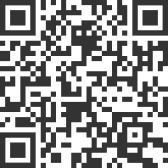The number of prisoners caught with drugs in Scotland’s jails has increased by more than 1,100% since 2014 thanks to inmate mail laced with narcotics.
Figures from the Scottish Conservatives showed 1,832 instances of inmates hiding or taking prohibited substances in the 2021/22 period – compared to just 152 in 2014/15.
The Scottish Prison Service (SPS) adopted a new policy of photocopying letters to prisoners last year after six people were rushed to hospital from HMP Shotts after overdosing on psychoactive substances during a two-day period.
That has since drastically reduced the number of overdose cases, but the Tories say the figures are a “damning indictment” of Nicola Sturgeon’s “soft-touch” approach to justice.
The party’s community safety minister Russell Findlay said drug rates created a “toxic environment” for those being rehabilitated.
The Scottish Government said prison officers were “working tirelessly” to prevent contraband from entering facilities.
Justice secretary Keith Brown introduced the photocopying policy following the incident at Shotts last November.
Nine drug fatalities had previously been recorded at the jail in 2021, leading to calls for justice secretary Keith Brown to resign.
During an evidence session of the parliament’s justice committee, HM Inspectorate of Prisons for Scotland, Wendy Sinclair-Gieben, said that despite staff being “phenomenal” at preventing many drugs getting in, it was still a “major, major issue”.
Findlay said the figures should be a “stark warning” to the First Minister, adding: “The shocking levels of drugs in Scotland’s prisons mirrors the carnage in our communities. They are a damning indictment of SNP soft-touch justice.
“Nicola Sturgeon slashed funding for addiction services as drugs deaths soared and her government ignored prisons officers’ warnings about drug-soaked mail. Little wonder Scotland has become Europe’s drug death capital.”
The SPS said it was “unreasonable” to compare figures from the two time periods as new policies, including the management of offenders at risk due to any Substance (MORS), had been introduced since then.
A spokesperson said: “Under MORS, an individual who appears to be under the influence having taken an illicit substance, would be included in these figures, following the assessment of a nurse.
“Prior to the introduction of MORS, they would only be included if evidence of the substance could be found.
“Another change has been the inclusion of psychoactive substances in the most recent figures, which would not have been included in those from 2014-15.
“We have also improved our methods of identifying illicit substances, through the introduction of Rapiscan machines and, more recently, photocopying of mail.”
A Scottish Government spokesperson said: “We are engaging with partners including NHS, Scottish Prison Service (SPS) and the Prison Care network to embed the medication-assisted treatment standards in prisons across Scotland.
“The SPS continues to work tirelessly to adapt its security measures to prevent, detect and deter the introduction of contraband in prisons.
“The routine photocopying of prisoner mail has led to an average reduction of 34% of ‘drug taking’ incidents and a 46% reduction in the need for emergency ambulance across the estate from October 2021 to July this year and is having a significant and positive effect on contributing to a stable environment across the prison estate.”
Follow STV News on WhatsApp
Scan the QR code on your mobile device for all the latest news from around the country


 PA Media
PA Media

























